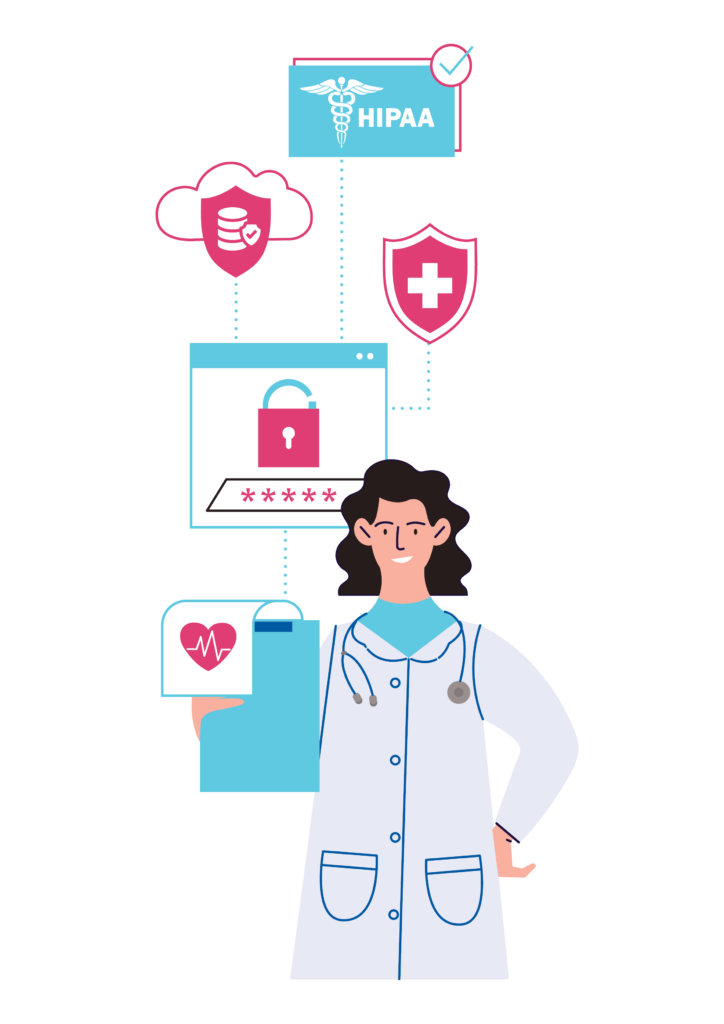HIPAA and HITRUST are two frameworks that are commonly compared because they are used in the healthcare industry.
Protected Health Information (PHI)
As a healthcare professional or a company storing or processing protected health information, you are responsible for protecting your patients’ private health information or PHI. Failure to do so can result in legal and financial consequences for your organization. According to the Health Insurance Portability and Accountability Act or HIPAA, covered entities like doctors, hospitals and insurance companies must have appropriate safeguards and controls in place to protect patients’ PHI from unauthorized access, use and disclosure. It is critical that you understand what constitutes PHI, how it should be handled and the penalties for violations to avoid data breaches and remain compliant with federal law.
What is Protected Health Information
Protected Health Information (PHI) refers to any individually identifiable health information – This may include one’s name, date of birth, phone number, geographic data, fax number (yes, some people still use faxes), a social security number/ ID number, an email address, medical records, account numbers, health plan benefits, certificates or licenses, vehicle ID, a web URL, device ID, an IP address, full face pictures and biometric records. All this information is received, created, maintained or transmitted by companies working in the healthcare environment or a company storing or processing protected health information. This includes: healthcare providers, health plans, business associates or healthcare clearinghouses. PHI includes various types of data – Physical, electronic and spoken data. The security of PHI is of utmost importance, especially in the realm of cyber security and information security. Strict measures must be implemented to ensure the confidentiality, integrity and availability of PHI. Organizations that handle PHI are required to adhere to specific data security requirements, such as those outlined in the Health Insurance Portability and Accountability Act (HIPAA) regulations. These requirements mandate the implementation of administrative, physical and technical safeguards to protect PHI from unauthorized access, disclosure, alteration or destruction. By ensuring robust PHI data security measures, organizations can maintain patient privacy, prevent data breaches and foster trust in the healthcare system.
To meet PHI data security requirements, you must:
- Conduct regular risk assessments to identify potential vulnerabilities or threats to patients’ information systems and implement controls to mitigate identified risks. This could include installing firewalls, using two-factor authentication and restricting access based on job function.
- Develop and enforce detailed security policies and procedures regarding the access, use and transmission of PHI. For example, limiting access to only authorized users, ensuring secure data exchange methods and training staff on appropriate handling of patient records.
- Monitor systems and networks regularly to detect potential breaches or unauthorized access to patient data. Quickly investigate and resolve any anomalies or suspicious user behavior.
- Provide continuous HIPAA and PHI security training to all members of your workforce with access to patient information. This helps ensure employees understand their responsibility to protect patient privacy and follow established policies and procedures.
The role of PHI in cybersecurity: Why it matters
Protected health information (PHI) refers to any individual information that can be used to identify someone. PHI is essential for providing healthcare and insurance coverage, but it also makes an attractive target for cybercriminals.
Securing PHI should be a top priority for any organization that collects or stores this type of sensitive data. Failure to do so can have serious consequences like:
- Violation of patient privacy. Unauthorized access to PHI breaches patients’ trust and violates their right to confidentiality.
- Fraud and identity theft. PHI contains personally identifiable information that can be used to open accounts or file for benefits in someone else’s name.
- Ransomware attacks. Healthcare organizations are frequent targets of ransomware, where hackers lock up digital files and demand payment to unlock them. PHI is often the bait used to launch these attacks.
Protecting PHI is a shared responsibility between healthcare organizations, their IT and security teams, and individual staff members. By working together with a commitment to privacy, safety and professional ethics, this sensitive data can remain secure.







